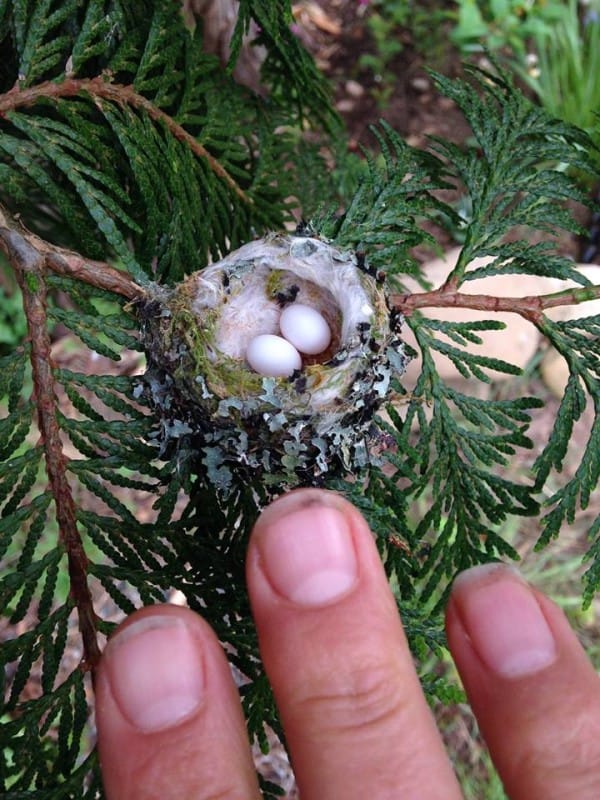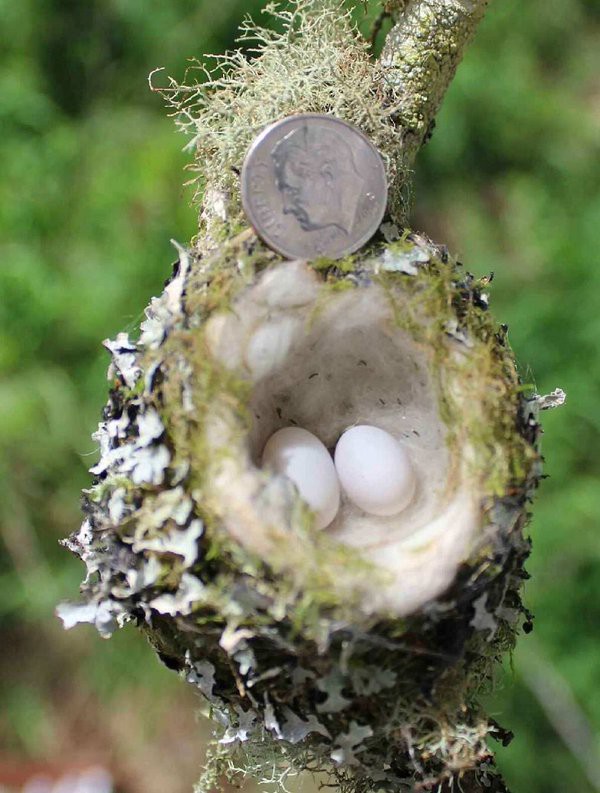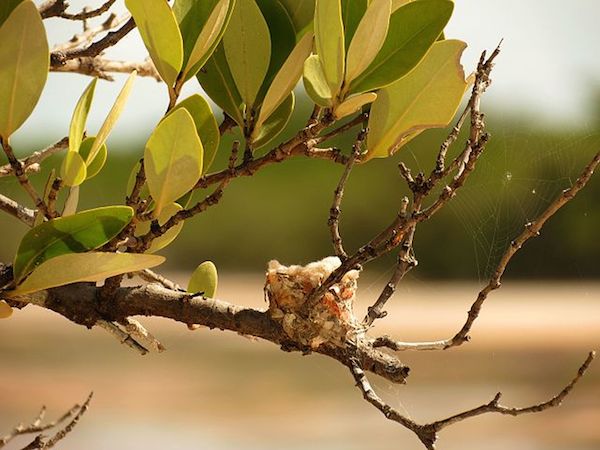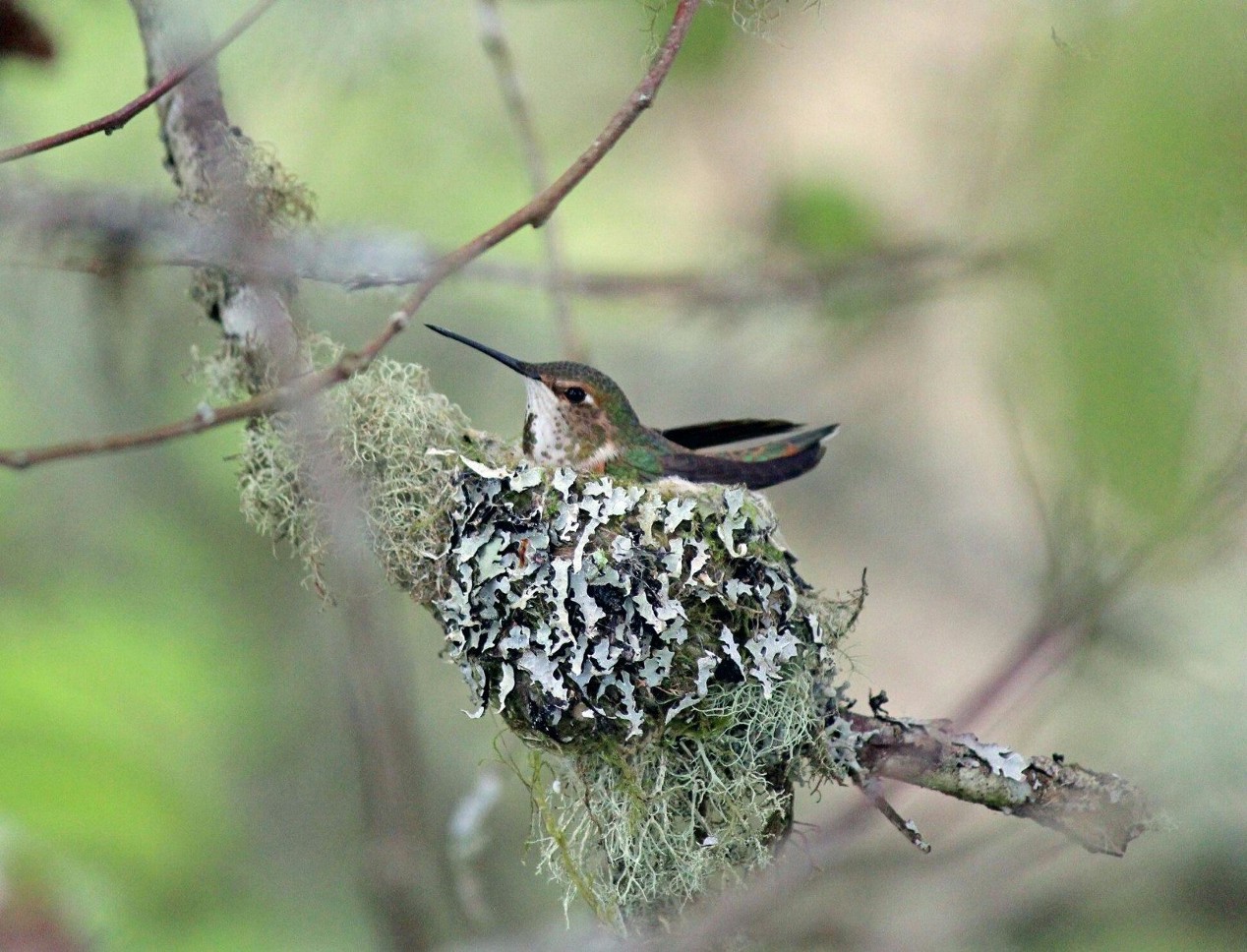Some species of hummingbirds are endangered, they are absolutely tiny and fragile birds that measure only a few centimeters long and their eggs are smaller than a jelly bean.

Here are some tips on how to spot them.
“Hummingbird eggs are small, the size of jelly beans! Remember to check carefully for nests before pruning trees and shrubs.’

34 hummingbird species (10%) are classified as “critically endangered,” meaning they have a 50/50 chance of extinction within the next ten years.
Therefore, keeping an eye on their small nests while pruning them is essential for their survival.

Nests are usually built on a downward-sloping branch, and you’ll often find them on a branch hanging over running water or open space, according to The Hummingbird Project.
They build their nests with spider webs, lichens and plant matter, so they are extremely delicate. The lichen also does a good job of camouflaging its nests.

Hummingbirds, on average, beat their wings between 50 and 80 beats per second, making them literally a blur to the human eye. If you’ve ever seen a hummingbird’s wings flap, it’s usually because the video has slowed down or the hummingbird is landing. .
Their metabolism is as fast as their wings and their weight can change dramatically throughout the day as they eat and burn energy; Because of this, they consume between half and 8 times their weight in sugar daily, and the average hummingbird feeds 5 to 8 times per hour—that’s a lot of the day it spends feeding!

Their hearts can beat more than 1,200 times per minute! If you compare that to the average human heart whose heart beats about 80 times a minute, that means that every time our heart beats once, the hummingbird’s heart beats 20 times, it’s crazy!





